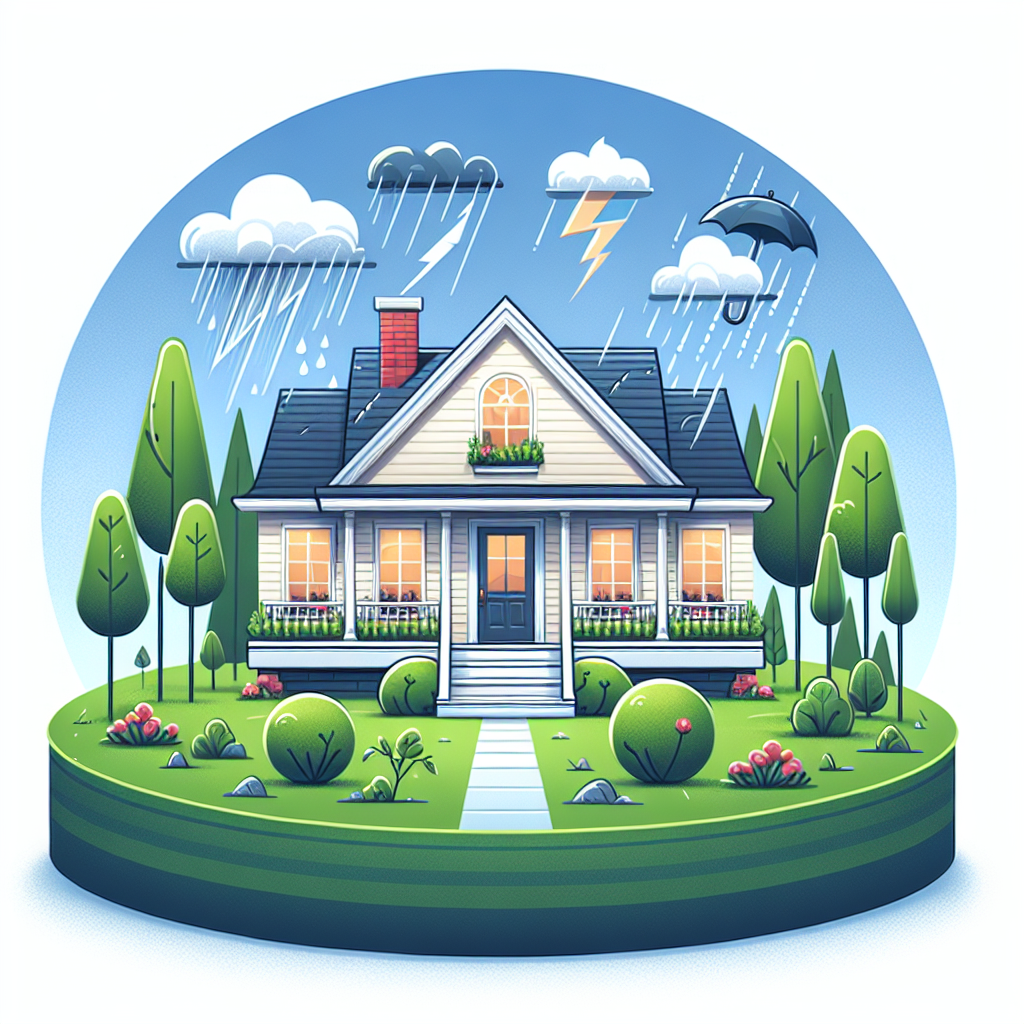Filed under Home Insurance on
What Coverage Do You Need for Home Insurance

You worked hard to buy your home. Protecting it starts with knowing exactly what your policy should cover, not just what it costs. If you’ve ever typed What Coverage Do You Need for Home Insurance into a search bar, you’ve likely found conflicting advice. This guide cuts through the noise with plain-language explanations, real-world examples, and current industry insights so you can choose protection that fits your risk, your budget, and your goals.
How a Home Insurance Policy Actually Works
Home insurance is a package policy built from several parts. Most owner-occupied single-family homes use an HO-3 or HO-5 form. The big difference is how they treat perils. HO-3 typically offers open-peril coverage for the structure (most causes of loss unless excluded) and named-peril coverage for belongings. HO-5 generally extends open-peril coverage to personal property as well, along with broader limits and fewer exclusions. Your decision on form type influences how easy it is to get a claim paid and what’s excluded upfront.
Policies are written with limits, deductibles, and exclusions. That means even a “comprehensive” policy won’t cover everything, and you’ll make choices about how much to insure, which extras to add, and how much risk you want to keep through your deductible. Understanding this framework is key to answering the question many homeowners ask: What Coverage Do You Need for Home Insurance?
The Core Protections in a Standard Policy
Dwelling Coverage (Coverage A)
This protects the physical structure of your home—walls, roof, built-in fixtures—against covered causes of loss like fire, wind, or theft. The crucial decision here is the limit. The right limit is the cost to rebuild your home as it stands today, not its market value or your mortgage balance. Construction costs vary by region and can climb quickly when demand spikes after a catastrophe, so your limit should be based on a professional replacement cost estimate, not rules of thumb.
Look for enhancements such as extended or guaranteed replacement cost. Extended replacement adds a percentage (often 25% to 50%) beyond your base limit to absorb inflation and surge pricing. Guaranteed replacement commits to rebuilding regardless of cost, available from some carriers. Ordinance or law coverage pays to bring your home up to current building codes after a covered loss—valuable in older neighborhoods where upgrades like wiring, seismic strapping, or energy-efficient systems are required.
Other Structures (Coverage B)
Fences, sheds, detached garages, gazebos, and pool houses fall here. This limit often defaults to a percentage of your dwelling amount. If you installed a new detached studio or extensive fencing, adjust the limit accordingly or add a specific endorsement.
Personal Property (Coverage C)
Your belongings—furniture, clothing, electronics, tools—are included, typically as a percentage of the dwelling limit. The key choice is how losses are valued: actual cash value deducts depreciation, while replacement cost reimburses the cost to purchase new equivalents. Replacement cost coverage is worth the modest premium increase for most households.
Be aware of sublimits on high-theft or high-value categories like jewelry, watches, firearms, collectibles, and fine art. If your engagement ring or camera gear exceeds the sublimit, schedule those items. Scheduling items generally waives the deductible and covers a broader range of risks, including mysterious disappearance in many cases.
Loss of Use (Coverage D)
Also called additional living expense, this coverage pays for temporary housing, meals, and certain extra costs if a covered claim makes your home uninhabitable. In areas prone to wildfires or hurricanes, this protection can be the difference between a minor disruption and a financial crisis. Make sure the limit and time frame align with local rebuild timelines, which can stretch far beyond expectations during busy seasons.
Personal Liability (Coverage E)
If someone is injured on your property or you accidentally injure someone or damage their property, liability coverage pays for legal defense and judgments up to your limit. Consider at least $300,000 to $500,000; many homeowners carry $1 million when assets or future income are at risk. For broader protection, a personal umbrella policy can add $1 million or more above your home and auto liability limits, often at a reasonable cost.
Ask about personal injury coverage for claims like libel or slander. Some policies exclude or limit dog-related injuries or high-risk amenities like trampolines and pools. Disclose these to your insurer and discuss risk controls such as fencing, self-closing gates, and signage to remain insurable.
Medical Payments to Others (Coverage F)
This no-fault coverage pays for minor medical bills if a guest is injured, regardless of liability. It helps resolve small incidents without a lengthy dispute. Typical limits are modest, but they spare you awkward conversations with friends and neighbors.
Perils and Exclusions: Where Gaps Happen
To truly determine What Coverage Do You Need for Home Insurance, you must know what’s not covered. Common exclusions include flood, earthquake, earth movement, sewer and drain backup, power failure, wear and tear, neglect, pests, and intentional damage. You can close many of these gaps:
- Flood insurance: Offered through the National Flood Insurance Program and private insurers. Required by many lenders in high-risk zones and wise for properties near rivers, lakes, or coastal areas, even outside mapped zones, due to evolving weather patterns.
- Earthquake coverage: Often a separate policy or endorsement. Consider if you live near fault lines or soft soil areas prone to amplified shaking.
- Water and sewer backup: Covers damage from sump pump failure or backed-up drains, a common and costly loss not included in standard policies.
- Service line coverage: Pays for underground utility line repairs on your property—water, sewer, electrical—typically excluded otherwise.
- Equipment breakdown: Extends protection to major home systems such as HVAC and appliances from mechanical or electrical failure.
- Matching siding or roof: Helps replace undamaged materials to achieve a uniform look after a partial loss, important with discontinued products.
- Inflation guard: Automatically increases coverage to keep pace with construction costs.
As extreme weather events have become more frequent and severe, insurers and regulators have updated models and underwriting standards. Industry analyses from organizations like the Insurance Information Institute and state insurance departments consistently show rising catastrophe losses and supply-chain pressures have pushed premiums up in many states since 2023. Knowing these trends helps you choose add-ons that address today’s risks, not yesterday’s.
How Much Coverage Do You Actually Need?
Answering the question What Coverage Do You Need for Home Insurance starts with sizing each coverage part to your specific risk. Here’s a practical approach:
- Determine true rebuild cost: Use your insurer’s replacement cost estimator and cross-check with a licensed contractor or local builder. Include foundation work, demolition, debris removal, permits, architect fees, and code upgrades. Distinctive finishes, custom cabinetry, tile, and high-end fixtures increase costs.
- Add buffers: Select extended or guaranteed replacement if available. Rebuilds after regional disasters tend to run higher due to labor and material shortages.
- Update other structures: Inventory detached builds or improvements and increase Coverage B if needed.
- Value your belongings: Conduct a home inventory room by room. Photos, serial numbers, and receipts help. Choose replacement cost for personal property. Schedule valuables above sublimits to avoid unpleasant surprises.
- Choose a realistic deductible: A higher deductible often cuts premiums, but make sure you can comfortably pay it in an emergency. In coastal and wind-prone states, there may be separate hurricane or wind/hail deductibles set as a percentage of your dwelling limit.
- Set liability limits for your financial life: Tally assets, home equity, savings, and future income. Consider a personal umbrella for affordable extra protection, typically when your net worth or exposure exceeds standard home policy limits.
- Add endorsements for exclusions that matter: Flood, earthquake, sewer backup, service line, and equipment breakdown are frequent difference-makers in modern claims.
Be mindful of coinsurance rules and coverage requirements. Many insurers require you to insure to the full replacement cost; underinsuring can reduce your claim payout even for partial losses. Review your limits annually, especially if you’ve renovated a kitchen, added a room, or installed solar or a home office.
Special Situations and How to Insure Them
Condos and Co-ops
Condo policies (HO-6) cover your unit’s interior, your belongings, liability, and loss of use. The master policy maintained by the association covers exteriors and common areas, but exactly where that coverage stops varies. Get your association’s declarations to understand whether it’s “all-in” or “bare walls.” Consider loss assessment coverage for your share of deductibles or uncovered damages to shared property. If you’ve made upgrades—wood floors, custom cabinets—add building property coverage to reflect the higher finish level.
Landlords and Short-Term Rentals
Renting to a long-term tenant? A dwelling policy (often a DP-3) is designed for rental properties and includes property and liability coverage without owner-occupied features like personal property. Hosting short-term guests through a platform? A standard home policy often excludes commercial activity. You may need a specific short-term rental endorsement or a commercial policy. Always disclose rental activity to your agent; undisclosed use can void coverage.
Under Construction or Vacant Homes
Renovations and vacancies change your risk profile. Major remodel? A builder’s risk policy may be appropriate to cover materials and work in progress. Vacant homes are more susceptible to theft and unnoticed damage; many insurers add restrictions after a home is empty for a set period. Get a vacancy permit or specialized coverage if you’ll be away long-term.
High-Value Homes and Unique Properties
Custom or high-value homes often benefit from an HO-5 form and carriers that specialize in complex risks. These policies may include broader coverage, higher sublimits, cash-out options after a loss, and risk mitigation services. Historic homes, unique architecture, or eco-friendly systems like geothermal require careful valuation and sometimes specialty insurers.
Pricing and Market Trends to Watch
Premiums are influenced by catastrophe risk, reinsurance costs, inflation in building materials and labor, and claim frequency. Recent years have seen non-renewals and tightened underwriting in wildfire, wind, and coastal areas. Insurers increasingly use wildfire defensibility scores, wind/hail maps, distance to brush or coastline, and roof age and material to determine eligibility and rate.
Mitigation matters. Upgrading to impact-resistant roofing, installing fire-resistant vents, creating defensible space, adding monitored security and leak sensors, and hardening openings can make you a more attractive risk and may earn discounts. Some carriers offer smart-home credits for water shutoff devices or home monitoring. These improvements aren’t just for savings—they can prevent a loss from happening in the first place.
Newer solutions are emerging, too. Parametric policies pay a set amount based on an event trigger (like earthquake magnitude or hurricane wind speed), helping cover expenses quickly even while a traditional claim is processed. While not a replacement for standard coverage, they can add resilience for specific hazards.
Claims Strategy and Documentation
Good coverage is only half the story; how you prepare and respond matters.
- Build and update a home inventory with photos or video, receipts, and serial numbers. Store it in the cloud or offsite.
- After a loss, document damage immediately and take reasonable steps to prevent further damage, like tarping a roof or shutting off water.
- Keep all invoices and communication. Understand your policy’s duties after loss, including timelines for notice and proof of loss.
- Consider whether to file small claims that could cost you a claims-free discount or lead to surcharges. Ask your agent about the long-term impact before filing minor losses.
- For complex or large claims, a contractor’s detailed estimate or a public adjuster may help ensure the scope of damage is addressed. Choose professionals carefully and coordinate with your insurer.
Cost Factors You Can Control
- Choose a sensible deductible. Raising from a low to a moderate deductible often offers meaningful savings with manageable risk.
- Bundle home and auto for multi-policy discounts.
- Improve your roof and home systems; insurers value new roofs and updated electrical, plumbing, and HVAC.
- Add monitored security, water leak detection, and automatic shutoff devices.
- Ask about discounts for claim-free history, new homebuyer, fortified roofing standards, and renovations.
- Maintain a strong credit-based insurance score where permitted; it can affect rates in many states.
Regional Realities
Risk is local. Coastal homes contend with wind and surge; inland properties face hail and tornadoes; western regions manage wildfire and earthquake exposure. Even within the same city, distance to fire hydrants, the local fire department’s rating, elevation, and roof age can change pricing and eligibility. To refine your answer to What Coverage Do You Need for Home Insurance, combine a solid base policy with endorsements targeted to your top local hazards.
A Quick Checklist to Get It Right
Use this checklist to translate the big question—What Coverage Do You Need for Home Insurance—into concrete decisions:
- Obtain a professional replacement cost estimate for your home and select extended or guaranteed replacement if available.
- Set other structures coverage to reflect real improvements like fences, sheds, or detached studios.
- Choose replacement cost for personal property and schedule valuables beyond sublimits.
- Confirm adequate loss of use for realistic rebuild timelines in your area.
- Carry at least $300,000 to $500,000 of liability; add a personal umbrella if you have significant assets or risk exposure.
- Select deductibles you can comfortably pay, noting any separate wind/hail or hurricane deductibles.
- Add endorsements for flood, earthquake, sewer backup, service lines, and equipment breakdown where relevant.
- Disclose rentals, business use, pets, or renovations to avoid surprises at claim time.
- Update your policy after remodels, solar installations, or major purchases.
- Revisit your coverage annually with an independent agent to track market and construction cost changes.
Frequently Asked Questions
Do I insure my home for market value or rebuild cost?
Rebuild cost. Market value includes land and local demand; insurance pays to reconstruct the structure and attached features. Use replacement cost estimators and local contractor input to set your limit.
Is flood covered by homeowners insurance?
No. Flood is excluded. Purchase a separate flood policy through the NFIP or a private insurer. Even outside high-risk zones, consider coverage due to changing rainfall patterns and drainage issues.
What’s the difference between actual cash value and replacement cost?
Actual cash value subtracts depreciation; replacement cost pays the current cost to buy new. Replacement cost usually provides better recovery for most households.
How often should I review my coverage?
At least annually, and after any remodeling, major purchase, or lifestyle change. Construction costs, local risks, and personal assets change over time.
Why are rates rising in some states?
Higher catastrophe losses, reinsurance costs, supply chain and labor inflation, and concentrated exposure in certain regions have pressured rates. Regulators and insurers continually adjust models to keep coverage available and solvent.
Can smart-home devices really help?
Yes. Monitored security, water leak detection with automatic shutoff, and temperature sensors can prevent or reduce losses, sometimes earning discounts and making your home more insurable.
Putting It All Together
Ultimately, What Coverage Do You Need for Home Insurance comes down to aligning the policy’s building blocks with your property, your location, and your financial priorities. Start with accurate rebuild cost for your dwelling, add realistic protection for belongings, ensure meaningful loss of use, and carry robust liability shaped by your assets. Then close the big gaps—flood, earthquake, sewer backup, service lines—with targeted endorsements or separate policies.
Don’t go it alone. An experienced independent agent can compare multiple carriers, explain differences between HO-3 and HO-5 forms, and help you secure valuable add-ons like extended replacement and ordinance or law coverage. With a thoughtful review and a few smart upgrades to your home, you can strike the right balance of cost and protection.
One last time, if you’re still wondering What Coverage Do You Need for Home Insurance, use the checklist above, ask for a professional rebuild estimate, and customize endorsements to your top local hazards. The result is a policy that does more than satisfy your lender—it protects your home life when it matters most.





